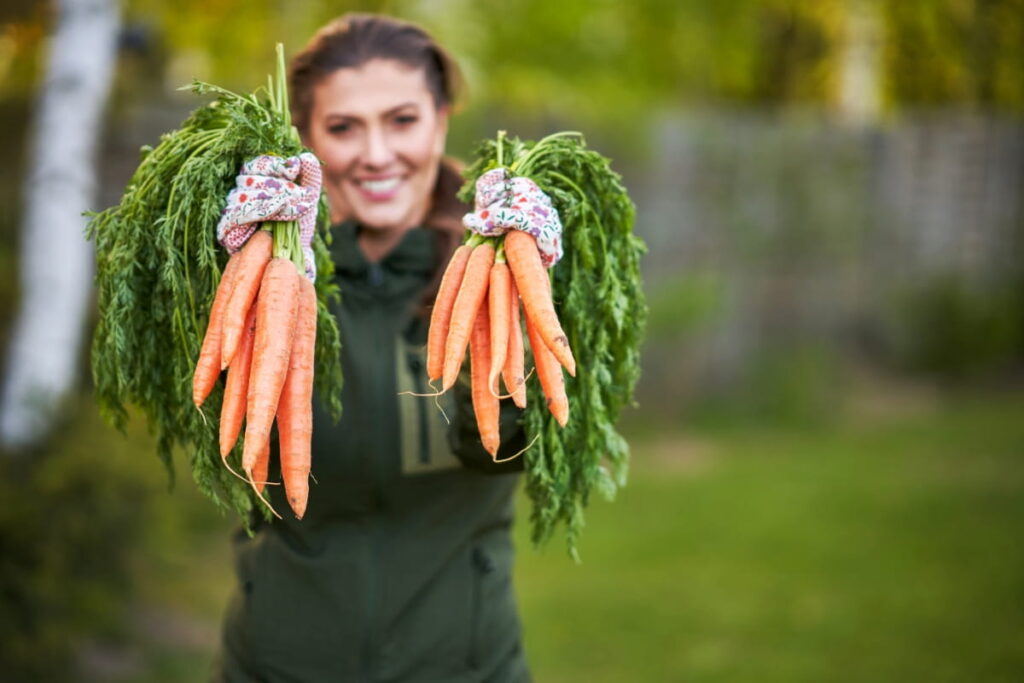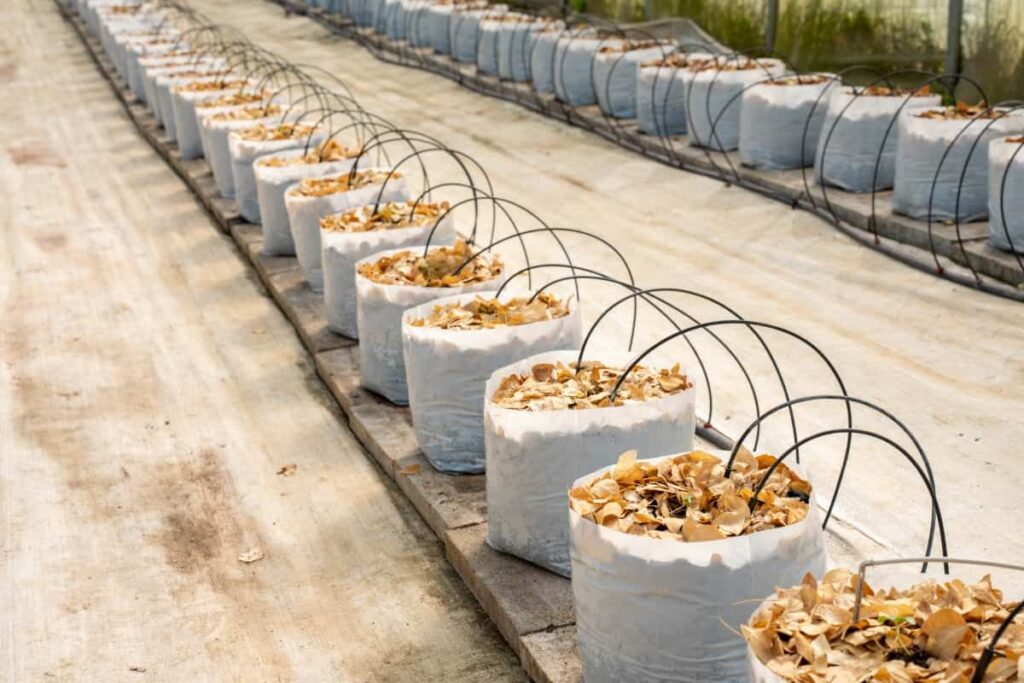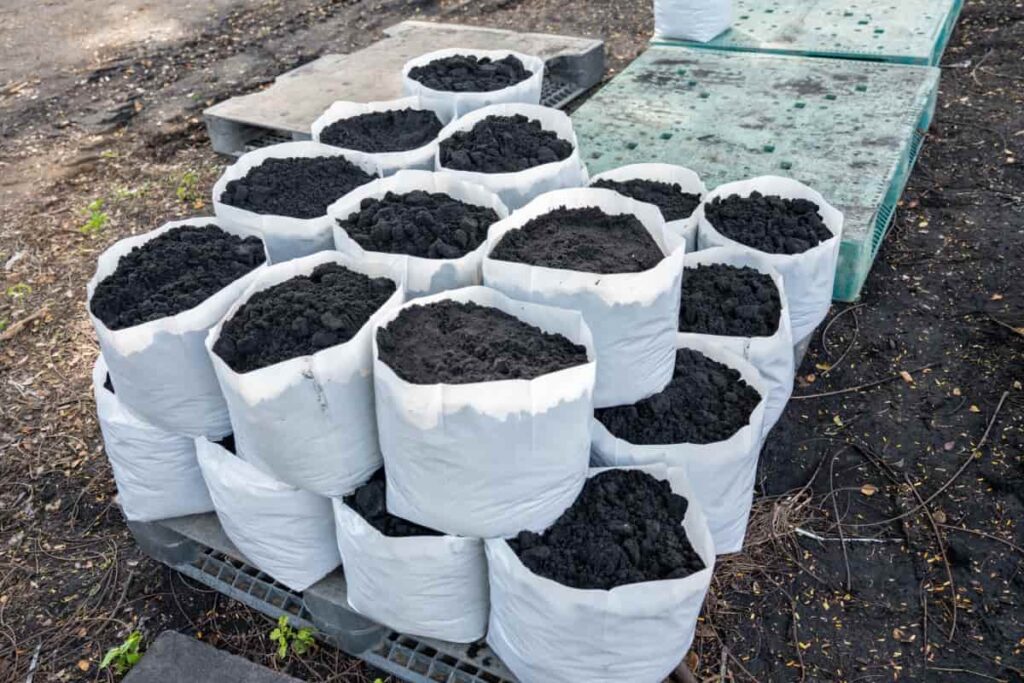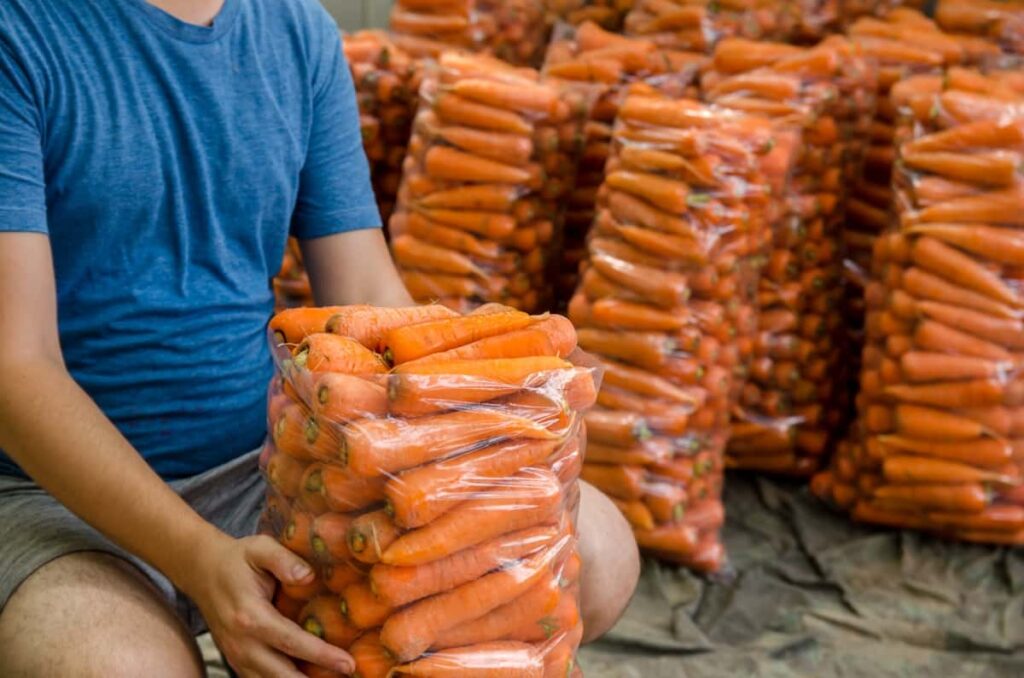Carrots are a beloved vegetable for their sweet flavor and versatility in the kitchen. Growing carrots in grow bags presents an accessible and efficient method for cultivating these nutritious root crops. In this comprehensive guide, we’ll explore everything you need to know about Grow bag gardening for carrots, from selecting the right varieties to harvesting your bountiful crop.
Advantages of Using Grow Bags for Carrots
- Grow bags are space-saving solutions, perfect for those with limited gardening space such as balconies, patios, or small yards.
- Prevent waterlogging and root rot, and grow bags typically offer superior drainage compared to traditional pots or containers.
- Grow bags often regulate soil temperature better than traditional containers, creating an optimal environment for carrot development.
- Grow bags are lightweight and portable, allowing for easy repositioning to maximize sunlight exposure.
Selecting the Right Carrot Varieties for Grow Bags
- Size: Choose compact or baby carrot varieties that are well-suited for carrot varieties for container gardening and also best for grow bags.
- Shape: Look for shorter, stumpier varieties rather than long, tapered ones to accommodate the depth of grow bags.
- Maturation Time: Opt for quick-maturing varieties to ensure a timely harvest in the confined space of grow bags.

Planting Carrots in Grow Bags
Choosing the Right Grow Bags
Factors to Consider: Size, Material, and Drainage
- Size: For carrot grow bag setup, choose grow bags with sufficient depth (at least 12 inches) to accommodate the development of carrot roots.
- Material: Opt for breathable materials such as fabric grow bags, which promote air circulation and prevent overwatering.
- Drainage: Ensure the grow bags have adequate drainage holes to promote healthy root growth.
Benefits of Fabric Grow Bags for Carrots
- Air Pruning: Fabric grow bags naturally prune roots when they come into contact with air, preventing root circling and promoting healthy root development.
- Temperature Regulation: The breathable fabric regulates soil temperature, preventing overheating and ensuring optimal conditions for carrot growth. The optimal temperature for carrots in bags ranges between 15-22°C.
- Moisture Control: Fabric grow bags allow excess moisture to evaporate, reducing the risk of overwatering and root rot.
Soil Preparation for Carrots
Best Soil For Carrots In Bags
- Loamy Texture: Use a well-draining, loamy soil mix with a combination of sand, silt, and organic matter.
- Nutrient-Rich: Incorporate compost or aged manure into the soil mix to provide essential nutrients for carrot growth.
- pH Level: Aim for a slightly acidic to neutral pH level between 6.0 and 7.0 for optimal carrot growth.
Adjusting pH for Optimal Carrot Growth
In grow bag carrot cultivation, adjust soil pH to 6.0-7.0 using amendments like lime to raise pH or elemental sulfur to lower it. Test soil pH prior to planting with a soil testing kit. Maintaining the correct pH ensures optimal nutrient availability for carrot growth, promoting healthy root development and overall plant vigor.
Planting Carrot Seeds
Sowing Techniques for Even Germination
To ensure uniform germination, sow carrot seeds thinly and evenly across the surface of the soil in grow bags. Gently press the carrot seeds into the soil to ensure good seed-to-soil contact. Consistently keep the soil moist until germination occurs, which typically takes 1 to 3 weeks, based on environmental conditions.
Optimal Depth and Spacing for Carrots in Grow Bags: Planting Carrot Seeds in Grow Bags
Plant carrot seeds in grow bags at a depth of ¼ to ½ inch, covering them lightly with soil. Space the seeds approximately 1 to 2 inches apart to allow sufficient room for root development. Avoid overcrowding as it leads to competition for nutrients. As sunlight requirements for grow bag carrots, place your grow bags in a place where they receive 6 hours of sunlight daily.
In case you missed it: Carrot Farming Information Guide

Watering and Moisture Management
Establishing a Watering Routine for Carrots
For successful grow bag carrot cultivation, establish a consistent watering routine. Water regularly to maintain even moisture levels in the soil, ensuring carrots receive adequate hydration without becoming waterlogged. Morning watering is preferable to allow foliage to dry during the day and minimize the risk of fungal diseases.
Tips for Preventing Overwatering and Ensuring Even Moisture
- Drainage: Ensure grow bags have proper drainage to prevent waterlogging and root rot.
- Mulching: Apply mulch over the soil surface to hold moisture and regulate soil temperature.
- Monitor Moisture Levels: A moisture meter can be used to gauge soil moisture levels and adjust watering accordingly.
Fertilization and Nutrient Management
Selecting the Right Fertilizers for Carrots
For fertilizing carrots in fabric bags, choose a balanced fertilizer with equal parts nitrogen, phosphorus, and potassium (N-P-K) to promote overall plant health and root development. For Organic carrot cultivation in bags, organic options like compost, fish emulsion, or seaweed extract provide slow-release nutrients and improve soil structure.
Fertilization Schedule to Maximize Growth
Apply fertilizer at planting with a balanced formula, then transition to low-nitrogen fertilizer as carrots mature. Fertilize every 4 weeks during the season to ensure continuous nutrient supply. Over-fertilization can lead to excessive foliage growth at the expense of root development, so apply sparingly and monitor plant response. Adjust fertilization based on soil test results and plant needs to promote healthy foliage and robust root development.
Thinning and Spacing Carrots
The Importance of Thinning Young Carrot Seedlings
Thinning young carrot seedlings is vital to ensure proper root development and prevent overcrowding, which can lead to stunted growth and misshapen roots. Adequate spacing allows each plant to access sufficient nutrients, water, and sunlight, resulting in healthier and more robust carrots.
How to Thin Carrots in Grow Bags Effectively
When Thinning carrots in grow bags, wait until they reach a height of 3 inches. Using scissors, snip off excess seedlings at soil level, leaving approximately 2 inches of space between each remaining plant. Be careful not to disturb the roots of the remaining carrots.
In case you missed it: Carrot Farming Business Plan: How to Grow from Seed to Harvest

Pest and Disease Control
Identifying Common Carrot Pests and Diseases
Common pests include the carrot rust fly, aphids, and nematodes. Carrot rust flies lay eggs near carrot plants, and their larvae burrow into the roots, causing damage. Aphids feed on the foliage, while nematodes attack the roots, resulting in stunted growth and poor development. Diseases such as carrot blight, damping-off, and powdery mildew can also affect carrot plants, causing foliage discoloration, wilting, and decay.
Organic Control Methods and Preventative Measures
Organic pest control for carrots in bags includes crop rotation, companion planting with pest-repellent species like onions or marigolds, and regular inspection to catch issues early. Implementing integrated pest management techniques, like manual removal, using organic insecticides (like insecticidal soaps or neem oil), and introducing predatory insects like ladybugs or predatory nematodes can help manage pests organically. Additionally, maintaining soil health through proper watering, mulching, and balanced fertilization can bolster plant resistance to diseases.
Harvesting Carrots from Grow Bags
Knowing when Carrots are Ready for Harvest
Typically, Carrots are ready for harvest 70 to 80 days after planting, based on the variety and growing conditions. Look for signs of maturity such as vibrant color, firm texture, and a diameter of about ¾ to 1 inch. Avoid harvesting carrots prematurely, as they may be underdeveloped and lack flavor.
Techniques for Harvesting Carrots from Grow Bags
- Loosen the soil gently around the base of the carrot using a small trowel or garden fork to facilitate easy removal.
- Grasp the carrot near the base and pull it straight up with a steady, even pressure to avoid breaking the root.
- Trim the tops of harvested carrots to remove excess foliage, leaving about half an inch of stem attached to the root.
- Handle harvested carrots carefully to prevent bruising or damage. Avoid dropping or tossing them into containers.
In case you missed it: 10 Best Companion Plants for Carrots: What Not to Plant With Carrots

Conclusion
By following these guidelines, you’ll be well-equipped to plant and grow delicious carrots in grow bags, whether you’re a seasoned gardener or a beginner exploring the joys of home cultivation. Enjoy the satisfaction of harvesting your bountiful crop of fresh, flavorful carrots straight from your grow bags!
- Aquaponic Farming at Home: A Step-By-Step Guide
- Profitable Village Farming Business Ideas in 2024
- High-Yield Aquaculture: Fast-Growing Fish for Farming
- Effective Fish Pond Construction Techniques for Beginners
- Irrigation and Water Management in Pineapple Farming
- Blossom to Harvest: Mastering Flowering and Pollination in Papaya Farming
- Pig Fattening Essentials: From Selection to Sale for Beginners
- Raising Wagyu Cattle: A Complete Guide for Premium Beef Production
- Soil Types and Their Water Holding Capacity
